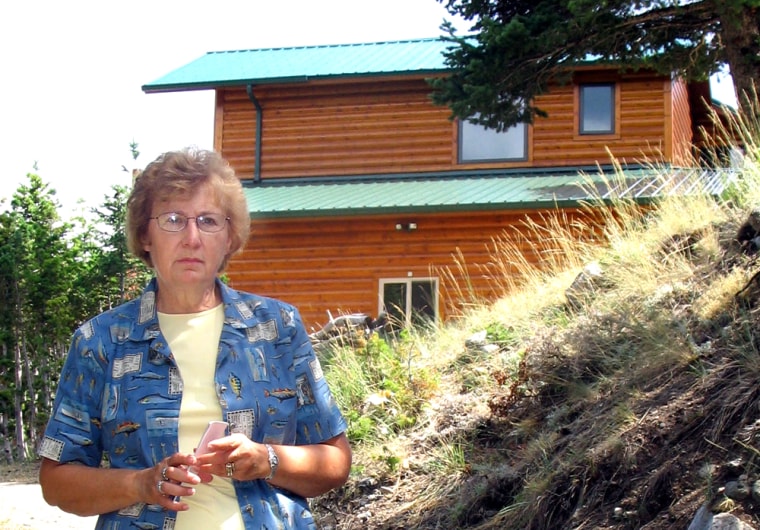John Novotny wanted to show the homeowner what could be done to help keep his house from going up in flames in case of a wildfire.
But the homeowner declined the free assessment, leery of having a bunch of his trees in the narrow canyon in southern Montana marked for removal.
It’s a response Novotny has run into more than once in the last year, as the veteran firefighter has knocked on doors and urged people to build the kind of buffers that could make all the difference in the event of a wildfire.
“Some people want to participate, some don’t,” Novotny said. “You have to chip away at it.”
Since the severe Western fire season of 2000, officials have placed a renewed emphasis on educating homeowners about the risks and responsibilities that come with living in some of the nation’s most fire-prone areas.
There have been roadside signs and radio ads, home visits and town meetings with fire experts and government incentives.
Warnings, incentives fall on deaf ears
Still, a report issued earlier this year by Congress’ investigative arm said that many homeowners aren’t taking measures to protect their homes against the threat, even though federal agencies offered financial assistance.
Reasons ranged from the time and money required to thin trees or replace wood-shingled roofs, to fears of changing the land’s aesthetics, the Government Accountability Office said.
With 8.4 million new homes built near fire-prone federal lands in the past 20 years, there is a growing urgency to get the message out, said Agriculture Undersecretary Mark Rey, who oversees Forest Service policy.
Often, it takes what fire officials call a “teachable moment” to spur homeowners to action. In Wilson, Wyo., many residents of the Crescent H Ranch area used to have no “defensible space,” or area around their homes cleared of all flammable vegetation.
Then a fire in 2001 forced them to flee their homes. Now most do to some degree, though it’s a struggle to get some to keep up with maintenance, said Reynolds Pomeroy, general manager of Crescent H.
“One of the things hardest to hit home with this is, you can’t do this and forget about it,” he said.
Critics cite too much red tape
Since fiscal year 2001, the Forest Service has made about $270 million available in grants to help homeowners in the so-called “wildland-urban interface” reduce risks. Neither the GAO report or Forest Service had exact numbers on how many homeowners were participating.
Lisa Gregory of The Wilderness Society said the process is so complicated that it’s difficult for individual homeowners to participate.
“There’s still a big gap in what is being done and what needs to be done,” she said.
The federal funds that states get for projects also can vary widely in any given year, said Paula Rosenthal, National Fire Plan coordinator for Montana’s Department of Natural Resources and Conservation, which administers Forest Service grant dollars in the state.
Sandi Crawford is glad money was available to help remove risks like downed trees and unwieldy brush in her gated community near Nye, in southern Montana.
Yet, when talk turned to seeking another grant to carry on the work, volunteers were scarce.
“Because this is their vacation homes, and they didn’t want to work — and it is work,” said Crawford, who oversaw the last grand and isn’t interested in taking on the role again.
In some communities, attitudes change
There have been successes, though. The awareness group Firewise has recognized 115 communities for their efforts to guard against the wildfire threat since 2002, and that number is likely to approach 200 by year’s end, said Michele Steinberg, community support specialist for Firewise, which is funded in part with federal money.
And those who have reduced fire hazards say they feel somewhat safer. Jeff Essmann, a state senator, said at first he was struck by how bare things looked on his property without many of the pines. Now the look has grown on him.
“I would say our chance of surviving a bad fire has gone from zero percent to — I would be guessing here — but I know it would be better than zero percent.”
